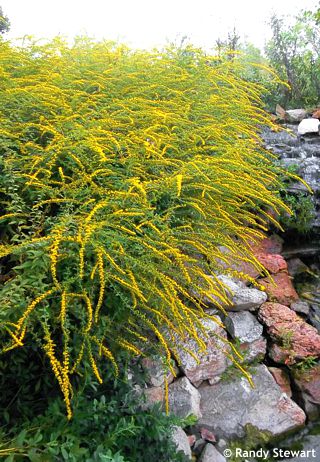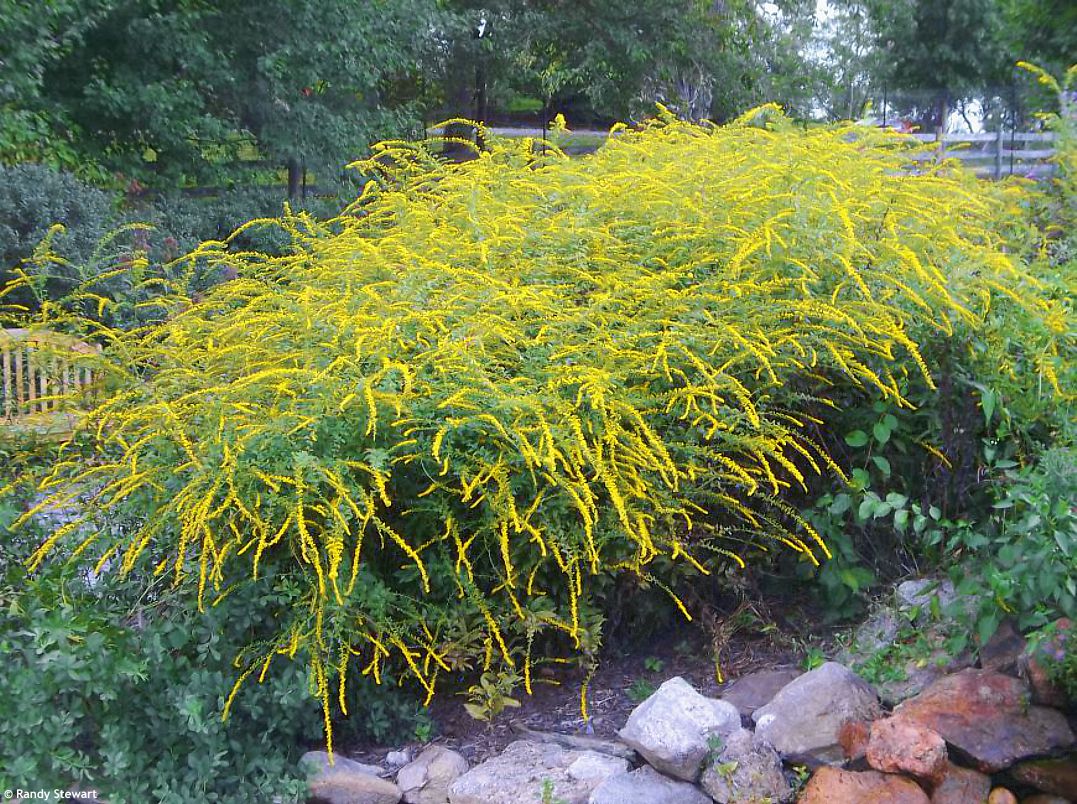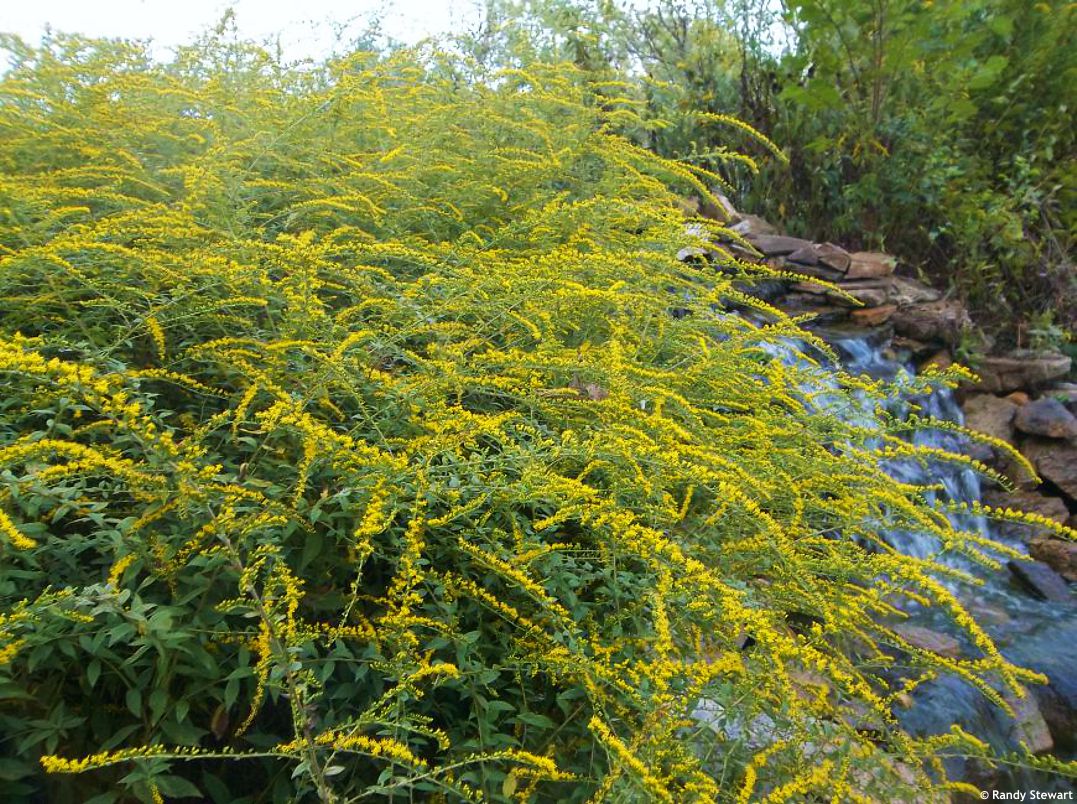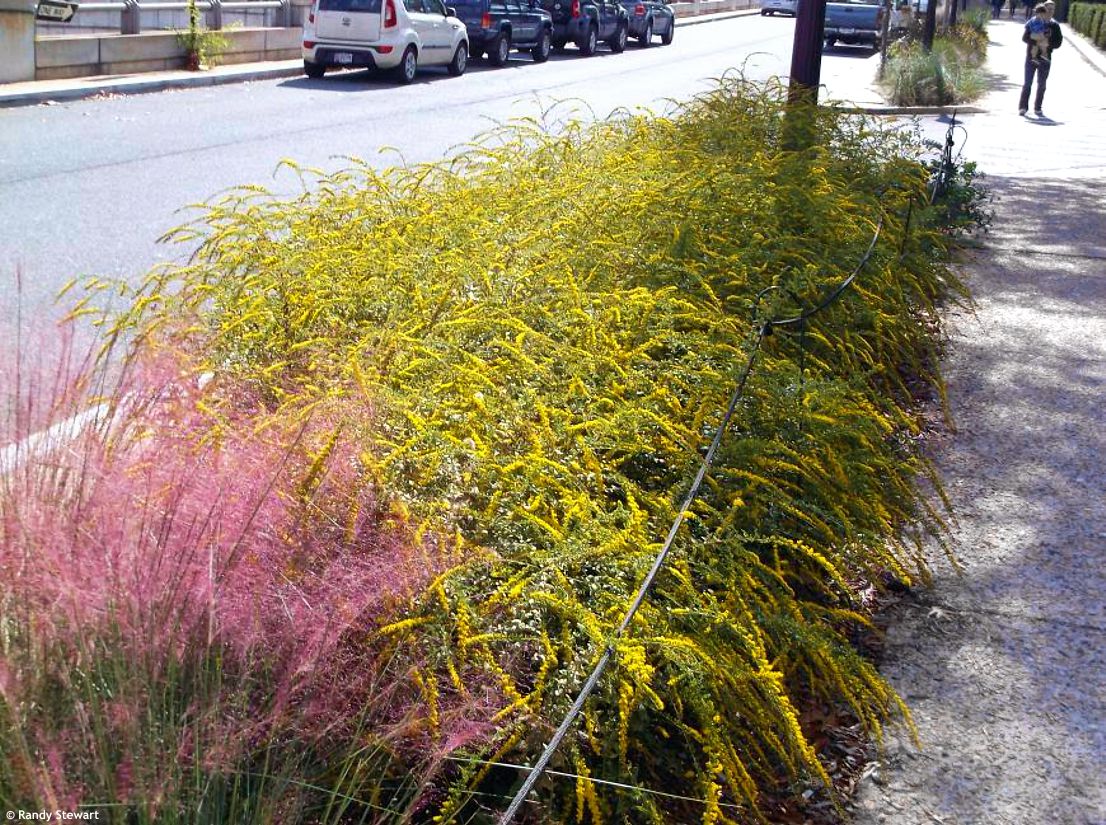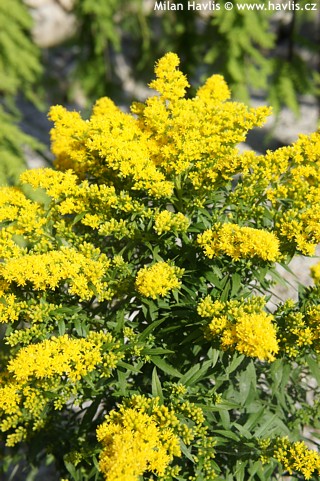Solidago rugosa 'FIREWORKS' rough goldenrod


Solidago
Goldenrod is a beautiful, flowering perennial that has been used in traditional medicine for hundreds of years and has adorned our gardens for a slightly shorter period. Many species find a way to live happily in almost any habitat and some are rated as invasive where they are native. Therefore, breeders aim to cultivate varieties that are well-behaved like the good boys from Sunday school. Two main characteristics are emphasized – clumping growth without runners and shorter height. There are more than 120 species, most of which are found in meadows, prairies, savannas, and occasionally along waterways in North America, with a few native to Latin America and a handful in Europe, though botanists believe they were brought here from America. This includes the species S. virgaurea (common goldenrod), which is considered the only native Central European species.The deciduous leaves are medium green, narrowly lance-shaped, about 5-8 cm long, and their deep veins make them look wrinkled and rough, hence the species name. Being less conspicuous, they allow the arching stems drag the attention, which gives the plant a soft and airy feeling. Due to its late blooming and the fact that the stems bend deeper just before flowering, you can plant this goldenrod in a second row of a perennial border, behind earlier blooming perennials of lower height. Because when their blooming ends in August, the goldenrod takes over and provides a great display almost until the first frosts.
Goldenrods are not demanding as to soil type, but rough goldenrod prefers moist soil and can even tolerate slight waterlogging and clay soil. It thrives best in full sun. Once established, it can withstand occasional droughts. It is not prone to pests or diseases and is wrongly accused of causing allergies – it is not an allergen. It is absolutely maintenance-free, just remove old stems in early spring and let it grow again, no fertilizing needed. Fireworks goldenrod is not invasive and stays in one tuft without creeping rhizomes. It is hardy to at least -34°C.
Last update 30-1-2025
Goods are shipped all over Europe. For Russia and U.K. and for further details please read about SHIPPING OPTIONS HERE.
Are you interested in a serious discount for orders NOV-FEB? Check your options here.
THE PRICES INCLUDE VAT of 15%. For quick conversion you can use 1 CZK = approx. 0.04 EUR
- STANDARD QUALITY - Plants of this group are 1st class quality with number of branches and overall density adequate to their size and age, considering they were container grown.
- DE LUXE QUALITY - This label guarantees a luxurious quality of manually selected plants that, compared to their height and age, are exceptionally dense and beautiful.
- EXTRA - These plants are usually mature and bigger specimens with exceptional overall appearance.
- STANDARD (as described in the plant form) means a tree with a trunk of 190-210 cm and a crown at the top, unless specified differently. The commercial size for trees is their girth measured in the height of 1m from ground.
- HOBBY - These plants are of the same quality as our standard-quality plants but younger and therefore cheaper.
- SHRUB - a woody plant with branches growing bushy from the ground level.
- HALF-STANDARD or MINI-STANDARD - a small tree with shorter trunk, its size is usually specified.
- FEATHERED - These are trees with branches growing already from the base of the trunk and up along the stem.
- GRASSES and PERENNIALS - Sizes given usually read the diameter of the pot or the clump, as specified.












